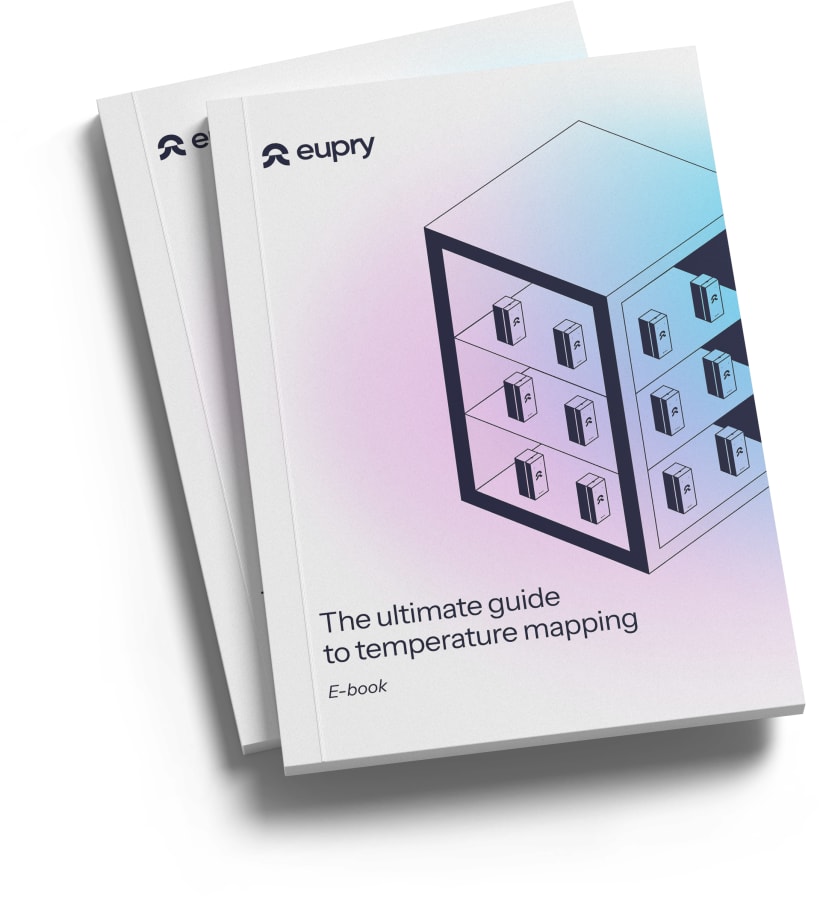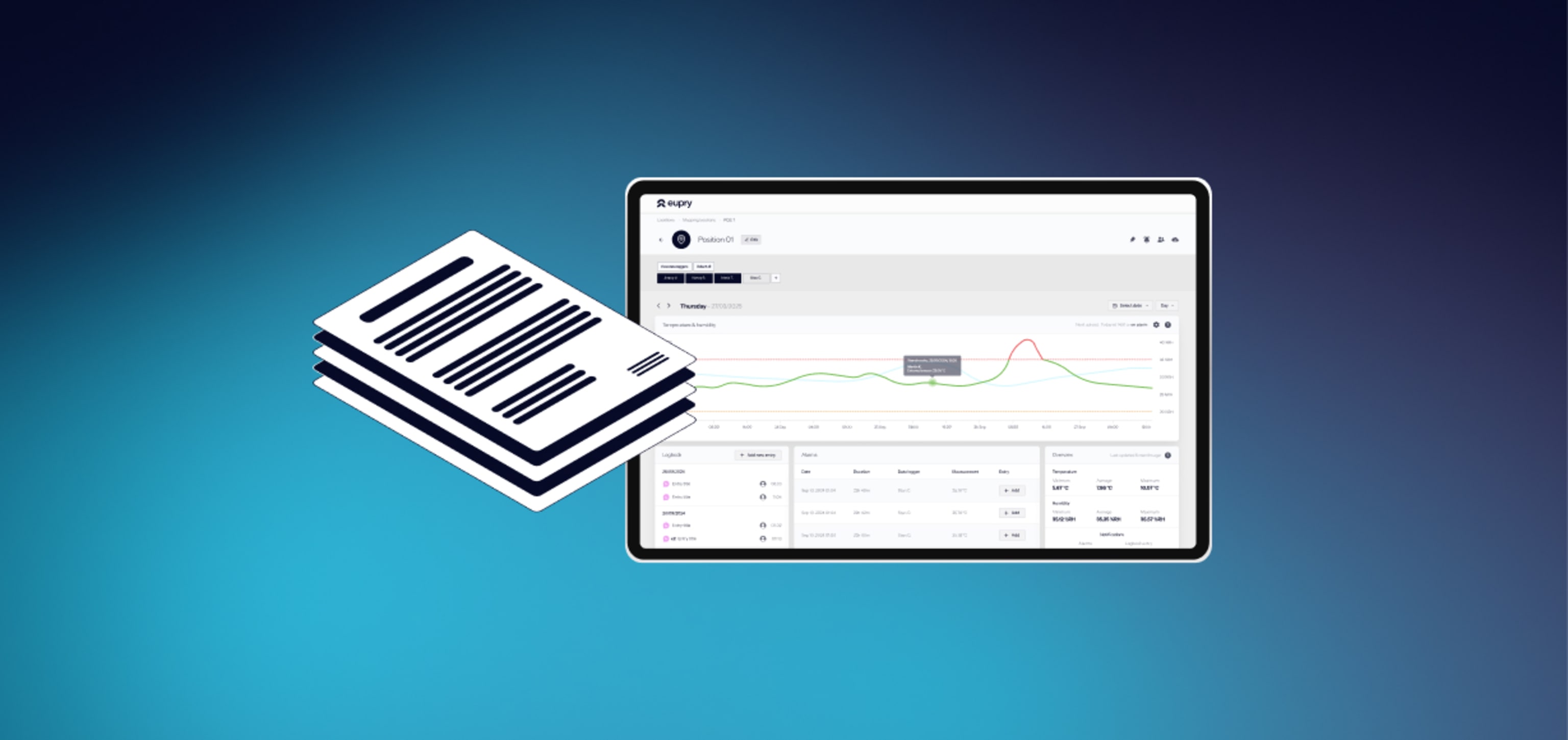
How do you analyze data from your mapping exercises?
Athina Magklara

Estimated reading time: 3 minutes
Abstract: Gain insights on interpreting data from your temperature mapping exercise to ensure the best conditions for your temperature-sensitive goods.
In this article, we will go through:
1. Obtaining data
The temperature/humidity data loggers register the values with an interval that depends on the settings of the data loggers (usually 3-5 minutes).
The data can be retrieved either automatically, such as in the case of Eupry’s data loggers by the use of Wi-Fi or manually by plugging in USB for each logger separately. Each data logger corresponds to a unique location within the unit/facility. Each logger has their own unique identification number.
Outdoor temperature/humidity levels
Prior to the analyzing of the data, it is necessary to take into account the outdoor environmental temperature/humidity levels. The weather reports are important to understand whether the unit/facility mapped is influenced by the outdoors environment.
Test plans
It is important to read and follow the filled test plan information in order to analyze the data correctly and associate the timeline of the mapping with the data provided.
The usual test plans include stability testing, door opening testing, power failure testing, and loading testing which include information on the start and end times of the tests. Between each test, a stabilization time should be included, in order for the data to be easier to interpret.
Data logger information
The data loggers used have specific requirements that need to follow the customer’s needs but also the regulatory requirements. Before the data analysis it is necessary to know information such as: Maximum Permissible Error or MPE, Calibration points, Calibration date limit, logging interval, and operating range.
2. Reviewing acceptance criteria and deviations
The acceptance criteria are set by the customer and the regulatory reports and should be defined as part of designing your mapping protocol. The customer sets their acceptance criteria based on their needs and in combination with the regulatory requirements, such as WHO reports, deviations are created for each case.
3. Analyzing temperature/humidity data
At the end of the mapping exercises, the data is listed by time and temperature for each time interval for each data logger.
For this article a single temperature data logger will be used as an example placed in a freezer with a set point temperature of -20℃. The freezer was in normal operating condition. The mapping lasted 5 days.
Maximum, minimum, and mean values
When analyzing the data sets, It is important for each data logger and therefore each position to have the minimum, maximum and mean values provided as it is an indication of the temperature distribution of the unit/facility. By comparing the values the hot and cold spots can be found.

Temperature hot & cold spots
The temperature/humidity data loggers have a small interval which is the error range or else MPE. For example, for the temperature loggers there might be an error of ± 0.5°C.
When MPE is taken into account the hot and cold spots are derived from the mean value of each data logger/position in order to estimate the true temperature value.
4. Creating graphs
By combining all data, a temperature graph can be made. The graph is easier for the customer and the analyst to comprehend the temperature distribution in the unit/facility and spot any occurring excursion or peaks.

In figure 1, an example graph is shown of a freezer for a timeline of 5 days. As can be seen, there are 2 distinct peaks that could be attributed to the freezing cycles of the unit or potential door openings.
The values are within the acceptable temperature range therefore the unit is suitable for the storage of temperature sensitive products.
5. Reaching conclusions
Based on the data analysis, the unit/facility can be deemed suitable for use and storage of specific temperature sensitive products or not. Suggestions can also be made based on the distribution of temperature/humidity on the space, such as changes on the layout of the space, but also on the amount of goods that should be stored within the unit/facility.

Get a 5-step temperature mapping guide
Download our thermal mapping guide and get all the information you need to conduct an efficient and reliable thermal mapping study.
References
WHO, Temperature mapping of storage areas Technical supplement to WHO Technical Report Series, No. 961, 2011
WHO, Supplement 7 Qualification of temperature-controlled storage areas Technical supplement to WHO Technical Report Series, No. 961, 2011
Also read: Which guidelines are relevant to your temperature mapping study working in pharma?



